A Review of Comprehensive Post-Occupancy Evaluation Feedback on Occupant-Centric Thermal Comfort and Building Energy Efficiency
Abstract
1. Introduction
1.1. Background
1.2. Good Health and Well-Being with Building Energy Sufficiency
- The limited consideration of socioeconomic factors;
- The limited focus on specific building types;
- The lack of systematic and interdisciplinary research;
- The limited exploration of feedback mechanisms;
- The disparity between theory and actuality;
- The lack of guidelines and standards.
2. Theoretical Framework
POE
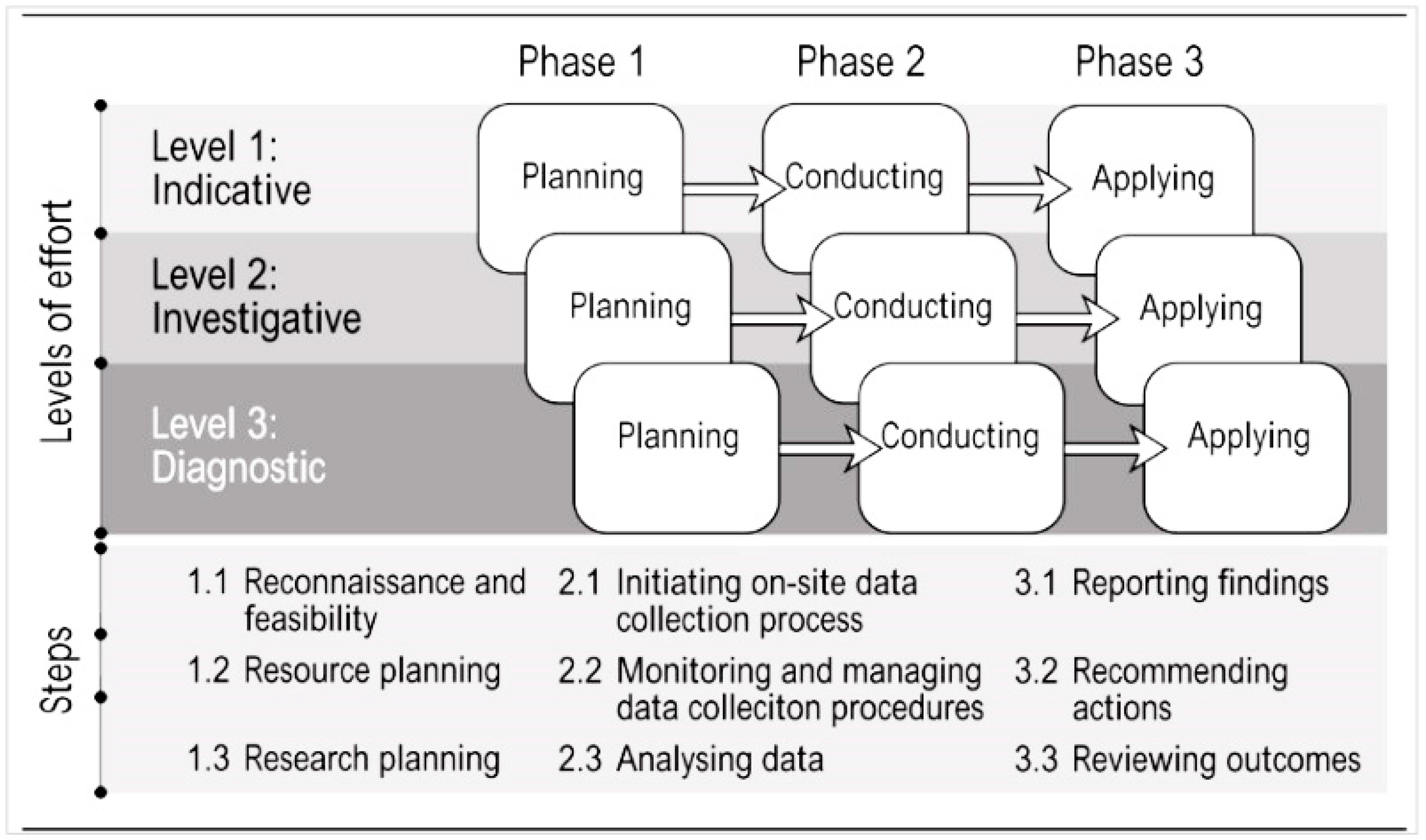
3. Materials and Methods
3.1. Literature Filtration
3.1.1. Data Collection Process
3.1.2. Eligibility Criteria
- (i)
- Articles or review papers;
- (ii)
- Peer-reviewed journals published between 2000 and 2023, which accounted for the most recent trends;
- (iii)
- The journal’s 3-year average impact factor being >2.5;
- (iv)
- Complete texts linked to POE;
- (v)
- The elimination of duplication and irrelevance;
- (vi)
- Papers indexed in either Scopus or the WoS;
- (vii)
- Papers written in English or Mandarin.
3.2. Bibliometric Analysis
3.2.1. Bibliographic Map of POE Research
3.2.2. Classification of Articles
3.2.3. Evolution of Papers with Significant Citation Spikes
3.2.4. Keyword Co-Occurrence Analysis
3.2.5. Cluster Analysis
3.3. Framework of the Review
- The development of models and systems for building environment POE;
- The exploration of the tradeoff between energy consumption, building performance, and human thermal comfort (TC);
- The nvestigation of feedback and sustainability within the context of POE;
- The role of POE in enhancing the health and well-being of occupants.
4. Synthesis Analysis
4.1. The Development of Models and Systems for Building Environment POE
4.1.1. OB Model
4.1.2. OB in Energy Consumption
4.2. Exploration of the Tradeoff between Energy Consumption, Building Performance, and Human TC
4.2.1. Energy Consumption
4.2.2. Multi-Domain Comfort
4.3. The Investigation of Feedback and Sustainability within the Context of POE
4.4. The Role of POE in Enhancing the Health and Well-Being of Occupants
5. Results and Discussion
5.1. Thermal Comfort Feedback
5.2. Energy Efficiency Feedback
5.3. Implications for Building Design and Operation
6. Current Study Limitations and Suggestions for Further Research
- A thorough understanding of the interaction between inhabitants and building systems is crucial for the accurate forecasting and effective implementation of energy management measures. Previous studies have extensively examined several facets of this correlation, such as energy usage, the operation of ventilation systems (or air conditioning), and the utilization of building openings such as windows and doors. Nevertheless, there is scant research specifically on the impact of hot water use on energy usage in various types of structures, particularly in residential environments. Despite being acknowledged as significant, the use of hot water has been subject to little research, highlighting the need for more study. The ramifications of this lack of research are substantial, especially when considering the acknowledged influence of hot water use in certain architectural scenarios. Future studies should prioritize a thorough investigation of the exact dynamics of hot water usage and the exploration of the inter-relations among different energy behaviors shown by renters. Acquiring a thorough understanding of the interaction and influence of numerous energy-related activities is crucial for creating more accurate predictions when estimating building energy use.
- Many studies employ comprehensive methodologies that involve case studies and experiments. These studies utilize various types of qualitative and quantitative data that are collected through surveys conducted before and after occupancy, the monitoring of occupants through sensors or observation, field measurements, and questionnaires. The data are then analyzed using techniques such as Markov chain, Monte Carlo, and logistic regression, as well as simulations. The research results have enhanced our knowledge of how tenants’ activities affect energy use in buildings. Currently, the studies have not yet provided substantial progress on forecasting the energy behavior of tenants in buildings. Specifically, incorporating the results of these studies into building energy modeling tools to narrow the discrepancy between anticipated and real energy use in buildings continues to be a major research obstacle in this field.
- With the enhanced accessibility and accuracy of building energy data, there is an opportunity to focus on creating statistical models for the electricity demand, electrical power factor, and domestic water use, including occupancy as an independent variable, and exploring new model forms.
- This systematic research has shown several attributes of the occupant demand in buildings via POE. These factors include the presence of occupants that are only partial in both time and location, the varied and diverse needs of occupants in terms of quality and quantity, and the need for management and adaptation with flexibility. Energy-sufficiency techniques can significantly reduce both energy usage and carbon emissions in response to these demand patterns.
7. Conclusions
Supplementary Materials
Author Contributions
Funding
Data Availability Statement
Conflicts of Interest
References
- The-Sustainable-Development-Goals-Report-2024.Pdf. Available online: https://unstats.un.org/sdgs/report/2024/The-Sustainable-Development-Goals-Report-2024.pdf (accessed on 27 July 2024).
- Dean, B.; Dulac, J.; Petrichenko, K.; Graham, P. Towards Zero-Emission Efficient and Resilient Buildings: Global Status Report; Global Alliance for Buildings and Construction (GABC): Paris, France, 2016. [Google Scholar]
- Zhou, Y.; Eom, J.; Clarke, L. The Effect of Global Climate Change, Population Distribution, and Climate Mitigation on Building Energy Use in the U.S. and China. Clim. Change 2013, 119, 979–992. [Google Scholar] [CrossRef]
- Yu, Z.; Haghighat, F.; Fung, B.C.M.; Morofsky, E.; Yoshino, H. A Methodology for Identifying and Improving Occupant Behavior in Residential Buildings. Energy 2011, 36, 6596–6608. [Google Scholar] [CrossRef]
- Zhang, Y.; Bai, X.; Mills, F.P.; Pezzey, J.C.V. Rethinking the Role of Occupant Behavior in Building Energy Performance: A Review. Energy Build. 2018, 172, 279–294. [Google Scholar] [CrossRef]
- Yan, D.; O’Brien, W.; Hong, T.; Feng, X.; Burak Gunay, H.; Tahmasebi, F.; Mahdavi, A. Occupant Behavior Modeling for Building Performance Simulation: Current State and Future Challenges. Energy Build. 2015, 107, 264–278. [Google Scholar] [CrossRef]
- Xu, X.; Yu, H.; Sun, Q.; Tam, V.W.Y. A Critical Review of Occupant Energy Consumption Behavior in Buildings: How We Got Here, Where We Are, and Where We Are Headed. Renew. Sustain. Energy Rev. 2023, 182, 113396. [Google Scholar] [CrossRef]
- Fournier, E.D.; Cudd, R.; Federico, F.; Pincetl, S. On Energy Sufficiency and the Need for New Policies to Combat Growing Inequities in the Residential Energy Sector. Elem. Sci. Anthr. 2020, 8, 24. [Google Scholar] [CrossRef]
- Millward-Hopkins, J.; Steinberger, J.K.; Rao, N.D.; Oswald, Y. Providing Decent Living with Minimum Energy: A Global Scenario. Glob. Environ. Change 2020, 65, 102168. [Google Scholar] [CrossRef]
- Agha-Hossein, M.M.; El-Jouzi, S.; Elmualim, A.A.; Ellis, J.; Williams, M. Post-Occupancy Studies of an Office Environment: Energy Performance and Occupants’ Satisfaction. Build. Environ. 2013, 69, 121–130. [Google Scholar] [CrossRef]
- Ildiri, N.; Bazille, H.; Lou, Y.; Hinkelman, K.; Gray, W.A.; Zuo, W. Impact of WELL Certification on Occupant Satisfaction and Perceived Health, Well-Being, and Productivity: A Multi-Office Pre- versus Post-Occupancy Evaluation. Build. Environ. 2022, 224, 109539. [Google Scholar] [CrossRef]
- Rasheed, E.O.; Khoshbakht, M.; Baird, G. Time Spent in the Office and Workers’ Productivity, Comfort and Health: A Perception Study. Build. Environ. 2021, 195, 107747. [Google Scholar] [CrossRef]
- Bortolini, R.; Forcada, N. Association between Building Characteristics and Indoor Environmental Quality through Post-Occupancy Evaluation. Energies 2021, 14, 1659. [Google Scholar] [CrossRef]
- Mallory-Hill, S.; Preiser, W.F.E.; Watson, C.G. Enhancing Building Performance; John Wiley & Sons: Hoboken, NJ, USA, 2012; ISBN 978-0-470-65759-1. [Google Scholar]
- Alborz, N.; Berardi, U. A Post Occupancy Evaluation Framework for LEED Certified, U.S. Higher Education Residence Halls. Procedia Eng. 2015, 118, 19–27. [Google Scholar] [CrossRef]
- Yamagishi, A.; Terada, K.; Arakawa, M.; Amano, K.; Yamashita, Y.; Okamura, K.; Ishigaki, H.; Kato, N.; Tsuchikawa, T.; Sik, C.Y.; et al. Indoor Environmental Study and Post Occupancy Evaluation in an Office Environment. J. Therm. Biol. 1993, 18, 533–540. [Google Scholar] [CrossRef]
- Woo, J. A Post-Occupancy Evaluation of a Modular Multi-Residential Development in Melbourne, Australia. Procedia Eng. 2017, 180, 365–372. [Google Scholar] [CrossRef]
- Pannier, M.-L.; Lemoine, C.; Amiel, M.; Boileau, H.; Buhé, C.; Raymond, R. Multidisciplinary Post-Occupancy Evaluation of a Multifamily House: An Example Linking Sociological, Energy and LCA Studies. J. Build. Eng. 2021, 37, 102139. [Google Scholar] [CrossRef]
- Pastore, L.; Andersen, M. Building Energy Certification versus User Satisfaction with the Indoor Environment: Findings from a Multi-Site Post-Occupancy Evaluation (POE) in Switzerland. Build. Environ. 2019, 150, 60–74. [Google Scholar] [CrossRef]
- Martinez-Molina, A.; Boarin, P.; Tort-Ausina, I.; Vivancos, J.-L. Assessing Visitors’ Thermal Comfort in Historic Museum Buildings: Results from a Post-Occupancy Evaluation on a Case Study. Build. Environ. 2018, 132, 291–302. [Google Scholar] [CrossRef]
- Hu, S.; Zhou, X.; Yan, D.; Guo, F.; Hong, T.; Jiang, Y. A Systematic Review of Building Energy Sufficiency towards Energy and Climate Targets. Renew. Sustain. Energy Rev. 2023, 181, 113316. [Google Scholar] [CrossRef]
- Collinge, W.O.; Landis, A.E.; Jones, A.K.; Schaefer, L.A.; Bilec, M.M. Productivity Metrics in Dynamic LCA for Whole Buildings: Using a Post-Occupancy Evaluation of Energy and Indoor Environmental Quality Tradeoffs. Build. Environ. 2014, 82, 339–348. [Google Scholar] [CrossRef]
- Gonzalez-Caceres, A.; Bobadilla, A.; Karlshøj, J. Implementing Post-Occupancy Evaluation in Social Housing Complemented with BIM: A Case Study in Chile. Build. Environ. 2019, 158, 260–280. [Google Scholar] [CrossRef]
- Göçer, Ö.; Göçer, K.; Başol, A.M.; Kıraç, M.F.; Özbil, A.; Bakovic, M.; Siddiqui, F.P.; Özcan, B. Introduction of a Spatio-Temporal Mapping Based POE Method for Outdoor Spaces: Suburban University Campus as a Case Study. Build. Environ. 2018, 145, 125–139. [Google Scholar] [CrossRef]
- Ponterosso, P.; Gaterell, M.; Williams, J. Post Occupancy Evaluation and Internal Environmental Monitoring of the New BREEAM “Excellent” Land Rover/Ben Ainslie Racing Team Headquarters Offices. Build. Environ. 2018, 146, 133–142. [Google Scholar] [CrossRef]
- Hirning, M.B.; Isoardi, G.L.; Coyne, S.; Garcia Hansen, V.R.; Cowling, I. Post Occupancy Evaluations Relating to Discomfort Glare: A Study of Green Buildings in Brisbane. Build. Environ. 2013, 59, 349–357. [Google Scholar] [CrossRef]
- Li, H.; Ng, S.T.; Skitmore, M. Stakeholder Impact Analysis during Post-Occupancy Evaluation of Green Buildings—A Chinese Context. Build. Environ. 2018, 128, 89–95. [Google Scholar] [CrossRef]
- Huang, X.; Chen, G.; Zhao, C.; Peng, Y.; Guo, W. Post Occupancy Evaluation of Indoor Environmental Quality of Sports Buildings at Hot and Humid Climate from the Perspective of Exercisers. Build. Environ. 2022, 226, 109760. [Google Scholar] [CrossRef]
- Hou, H.; Lai, J.H.K.; Edwards, D. Gap Theory Based Post-Occupancy Evaluation (GTbPOE) of Dormitory Building Performance: A Case Study and a Comparative Analysis. Build. Environ. 2020, 185, 107312. [Google Scholar] [CrossRef]
- Martinez-Molina, A.; Boarin, P.; Tort-Ausina, I.; Vivancos, J.-L. Post-Occupancy Evaluation of a Historic Primary School in Spain: Comparing PMV, TSV and PD for Teachers’ and Pupils’ Thermal Comfort. Build. Environ. 2017, 117, 248–259. [Google Scholar] [CrossRef]
- Menezes, A.C.; Cripps, A.; Bouchlaghem, D.; Buswell, R. Predicted vs. Actual Energy Performance of Non-Domestic Buildings: Using Post-Occupancy Evaluation Data to Reduce the Performance Gap. Appl. Energy 2012, 97, 355–364. [Google Scholar] [CrossRef]
- Tang, H.; Ding, Y.; Singer, B.C. Post-Occupancy Evaluation of Indoor Environmental Quality in Ten Nonresidential Buildings in Chongqing, China. J. Build. Eng. 2020, 32, 101649. [Google Scholar] [CrossRef]
- Pretlove, S.; Kade, S. Post Occupancy Evaluation of Social Housing Designed and Built to Code for Sustainable Homes Levels 3, 4 and 5. Energy Build. 2016, 110, 120–134. [Google Scholar] [CrossRef]
- Colclough, S.; Hegarty, R.O.; Murray, M.; Lennon, D.; Rieux, E.; Colclough, M.; Kinnane, O. Post Occupancy Evaluation of 12 Retrofit nZEB Dwellings: The Impact of Occupants and High in-Use Interior Temperatures on the Predictive Accuracy of the nZEB Energy Standard. Energy Build. 2022, 254, 111563. [Google Scholar] [CrossRef]
- Silva, M.F.; Maas, S.; Souza, H.A.D.; Gomes, A.P. Post-Occupancy Evaluation of Residential Buildings in Luxembourg with Centralized and Decentralized Ventilation Systems, Focusing on Indoor Air Quality (IAQ). Assessment by Questionnaires and Physical Measurements. Energy Build. 2017, 148, 119–127. [Google Scholar] [CrossRef]
- Choi, J.-H.; Loftness, V.; Aziz, A. Post-Occupancy Evaluation of 20 Office Buildings as Basis for Future IEQ Standards and Guidelines. Energy Build. 2012, 46, 167–175. [Google Scholar] [CrossRef]
- David Jiboye, A. Post-Occupancy Evaluation of Residential Satisfaction in Lagos, Nigeria: Feedback for Residential Improvement. Front. Archit. Res. 2012, 1, 236–243. [Google Scholar] [CrossRef]
- Mustafa, F.A. Performance Assessment of Buildings via Post-Occupancy Evaluation: A Case Study of the Building of the Architecture and Software Engineering Departments in Salahaddin University-Erbil, Iraq. Front. Archit. Res. 2017, 6, 412–429. [Google Scholar] [CrossRef]
- Mundo-Hernández, J.; Valerdi-Nochebuena, M.C.; Sosa-Oliver, J. Post-Occupancy Evaluation of a Restored Industrial Building: A Contemporary Art and Design Gallery in Mexico. Front. Archit. Res. 2015, 4, 330–340. [Google Scholar] [CrossRef]
- Dikmen, N.; Elias-Ozkan, S.T. Housing after Disaster: A Post Occupancy Evaluation of a Reconstruction Project. Int. J. Disaster Risk Reduct. 2016, 19, 167–178. [Google Scholar] [CrossRef]
- El-Darwish, I.I.; El-Gendy, R.A. Post Occupancy Evaluation of Thermal Comfort in Higher Educational Buildings in a Hot Arid Climate. Alex. Eng. J. 2018, 57, 3167–3177. [Google Scholar] [CrossRef]
- Kansara, T.; Ridley, I. Post Occupancy Evaluation of Buildings in a Zero Carbon City. Sustain. Cities Soc. 2012, 5, 23–25. [Google Scholar] [CrossRef]
- Carnemolla, P.; Debono, D.; Hourihan, F.; Hor, S.; Robertson, H.; Travaglia, J. The Influence of the Built Environment in Enacting a Household Model of Residential Aged Care for People Living with a Mental Health Condition: A Qualitative Post-Occupancy Evaluation. Health Place 2021, 71, 102624. [Google Scholar] [CrossRef]
- Shawesh, R.; Mohamed, M. Post-Occupancy Evaluation of Outdoor Thermal Comfort in Hot Arid Zone. Int. J. Low-Carbon Technol. 2021, 16, 50–60. [Google Scholar] [CrossRef]
- Sharmin, T.; Khalid, R. Post Occupancy and Participatory Design Evaluation of a Marginalized Low-Income Settlement in Ahmedabad, India. Build. Res. Inf. 2022, 50, 574–594. [Google Scholar] [CrossRef]
- Ning, Y.; Chen, J. Improving Residential Satisfaction of University Dormitories through Post-Occupancy Evaluation in China: A Socio-Technical System Approach. Sustainability 2016, 8, 1050. [Google Scholar] [CrossRef]
- Bai, X.; Xie, Z.; Dewancker, B.J. Exploring the Factors Affecting User Satisfaction in Poverty Alleviation Relocation Housing for Minorities through Post-Occupancy Evaluation: A Case Study of Pu’er. Sustainability 2022, 14, 15167. [Google Scholar] [CrossRef]
- Khoo, C.K.; Huang, J. Green Behaviors and Green Buildings: A Post-Occupancy Evaluation of Public Housing Estates in Hong Kong. Sustainability 2022, 14, 9862. [Google Scholar] [CrossRef]
- Asojo, A.; Vo, H.; Bae, S. The Impact of Design Interventions on Occupant Satisfaction: A Workplace Pre-and Post-Occupancy Evaluation Analysis. Sustainability 2021, 13, 13571. [Google Scholar] [CrossRef]
- Byrne, J.J.; Morrison, G.M. Pre- and Post-Occupancy Evaluation of Resident Motivations for and Experiences of Establishing a Home in a Low-Carbon Development. Sustainability 2019, 11, 3970. [Google Scholar] [CrossRef]
- Sidenius, U.; Nyed, P.K.; Lygum, V.L.; Stigsdotter, U.K. A Diagnostic Post-Occupancy Evaluation of the Nacadia® Therapy Garden. Int. J. Environ. Res. Public Health 2017, 14, 882. [Google Scholar] [CrossRef]
- Lei, Q.; Lau, S.S.Y.; Chao, Y.; Qi, Y. Post-Occupancy Evaluation of the Biophilic Design in the Workplace for Health and Wellbeing. Buildings 2022, 12, 417. [Google Scholar] [CrossRef]
- Melfi, R.; Rosenblum, B.; Nordman, B.; Christensen, K. Measuring Building Occupancy Using Existing Network Infrastructure. In Proceedings of the 2011 International Green Computing Conference and Workshops; IEEE: Orlando, FL, USA, 2011; pp. 1–8. [Google Scholar]
- Anand, P.; Cheong, D.; Sekhar, C. A Review of Occupancy-Based Building Energy and IEQ Controls and Its Future Post-COVID. Sci. Total Environ. 2022, 804, 150249. [Google Scholar] [CrossRef]
- Ahmed, O.; Sezer, N.; Ouf, M.; Wang, L. (Leon); Hassan, I.G. State-of-the-Art Review of Occupant Behavior Modeling and Implementation in Building Performance Simulation. Renew. Sustain. Energy Rev. 2023, 185, 113558. [Google Scholar] [CrossRef]
- Shika, S.A.; Sapri, M.; Jibril, J.D.; Sipan, I.; Abdullah, S. Developing Post Occupancy Evaluation Sustainability Assessment Framework for Retrofitting Commercial Office Buildings: A Proposal. Procedia Soc. Behav. Sci. 2012, 65, 644–649. [Google Scholar] [CrossRef]
- Yu, X.; Liu, L.; Wu, X.; Wu, X.; Wang, Z.; Liu, Q.; Shi, G. On a Post-Occupancy Evaluation Study of Effects of Occupant Behavior on Indoor Environment Quality in College Buildings in Chongqing. Procedia Eng. 2017, 205, 623–627. [Google Scholar] [CrossRef]
- Yu, L.; Sun, Z.; Ding, R.; Wang, S.; Feng, G. Research on the Post Occupancy Evaluation of Green Public Building Environmental Performance Combined with Carbon Emissions Accounting. Procedia Eng. 2015, 121, 1454–1460. [Google Scholar] [CrossRef][Green Version]
- Lawrence, R.; Keime, C. Bridging the Gap between Energy and Comfort: Post-Occupancy Evaluation of Two Higher-Education Buildings in Sheffield. Energy Build. 2016, 130, 651–666. [Google Scholar] [CrossRef]
- Strelets, K.; Perlova, E.; Platonova, M.; Pankova, A.; Romero, M.; Al-Shabab, M.S. Post Occupancy Evaluation (POE) and Energy Conservation Opportunities (ECOs) Study for Three Facilities in SPbPU in Saint Petersburg. Procedia Eng. 2016, 165, 1568–1578. [Google Scholar] [CrossRef]
- Dabaieh, M.; Maguid, D.; El Mahdy, D.; Wanas, O. An Urban Living Lab Monitoring and Post Occupancy Evaluation for a Trombe Wall Proof of Concept. Sol. Energy 2019, 193, 556–567. [Google Scholar] [CrossRef]
- Mansor, R.; Sheau-Ting, L. Criteria for Occupant Well-Being: A Qualitative Study of Malaysian Office Buildings. Build. Environ. 2020, 186, 107364. [Google Scholar] [CrossRef]
- Bordass, B.; Leaman, A.; Eley, J. A Guide to Feedback A Guide to Feedback and Post-Occupancy Evaluation. 2016. Available online: https://www.usablebuildings.co.uk/UsableBuildings/Unprotected/AGuideToFeedbackAndPostOccupancyEvaluation.pdf (accessed on 8 September 2024).
- Feng, Y.; Liu, S.; Wang, J.; Yang, J.; Jao, Y.-L.; Wang, N. Data-Driven Personal Thermal Comfort Prediction: A Literature Review. Renew. Sustain. Energy Rev. 2022, 161, 112357. [Google Scholar] [CrossRef]
- Rahanjam, B.A.; Ilbeigi, M. Post-Occupancy Evaluation of Office Buildings’ Indoor Environmental Quality from the Perspectives of Architects and Non-Architects (Case Study: Iran). J. Build. Eng. 2021, 42, 102782. [Google Scholar] [CrossRef]
- Jones, R.V.; Goodhew, S.; de Wilde, P. Measured Indoor Temperatures, Thermal Comfort and Overheating Risk: Post-Occupancy Evaluation of Low Energy Houses in the UK. Energy Procedia 2016, 88, 714–720. [Google Scholar] [CrossRef]
- Yan, B.; Yang, W.; He, F.; Zeng, W. Occupant Behavior Impact in Buildings and the Artificial Intelligence-Based Techniques and Data-Driven Approach Solutions. Renew. Sustain. Energy Rev. 2023, 184, 113372. [Google Scholar] [CrossRef]
- Čulić, A.; Nižetić, S.; Šolić, P.; Perković, T.; Čongradac, V. Smart Monitoring Technologies for Personal Thermal Comfort: A Review. J. Clean. Prod. 2021, 312, 127685. [Google Scholar] [CrossRef]
- Göçer, Ö.; Hua, Y.; Göçer, K. Completing the Missing Link in Building Design Process: Enhancing Post-Occupancy Evaluation Method for Effective Feedback for Building Performance. Build. Environ. 2015, 89, 14–27. [Google Scholar] [CrossRef]
- Bordass, B.; Leaman, A. Making Feedback and Post-Occupancy Evaluation Routine 1: A Portfolio of Feedback Techniques. Build. Res. Inf. 2005, 33, 347–352. [Google Scholar] [CrossRef]
- Preiser, W.F.E. Post-Occupancy Evaluation: How to Make Buildings Work Better. Facilities 1995, 13, 19–28. [Google Scholar] [CrossRef]
- GhaffarianHoseini, A.; Berardi, U.; GhaffarianHoseini, A. What Can We Learn from Malay Vernacular Houses? Sustain. Cities Soc. 2014, 13, 157–170. [Google Scholar] [CrossRef]
- Kundi, Y.M.; Aboramadan, M.; Elhamalawi, E.M.I.; Shahid, S. Employee Psychological Well-Being and Job Performance: Exploring Mediating and Moderating Mechanisms. Int. J. Organ. Anal. 2020, 29, 736–754. [Google Scholar] [CrossRef]
- Kun, A.; Gadanecz, P. Workplace Happiness, Well-Being and Their Relationship with Psychological Capital: A Study of Hungarian Teachers. Curr. Psychol. 2022, 41, 185–199. [Google Scholar] [CrossRef]
- Wang, C.; Wang, J.; Norbäck, D. A Systematic Review of Associations between Energy Use, Fuel Poverty, Energy Efficiency Improvements and Health. Int. J. Environ. Res. Public Health 2022, 19, 7393. [Google Scholar] [CrossRef]
- Coggins, A.M.; Wemken, N.; Mishra, A.K.; Sharkey, M.; Horgan, L.; Cowie, H.; Bourdin, E.; McIntyre, B. Indoor Air Quality, Thermal Comfort and Ventilation in Deep Energy Retrofitted Irish Dwellings. Build. Environ. 2022, 219, 109236. [Google Scholar] [CrossRef]
- Zallio, M.; Clarkson, P.J. The Inclusion, Diversity, Equity and Accessibility Audit. A Post-Occupancy Evaluation Method to Help Design the Buildings of Tomorrow. Build. Environ. 2022, 217, 109058. [Google Scholar] [CrossRef]
- Ho, D.C.-W.; Chau, K.-W.; King-Chung Cheung, A.; Yau, Y.; Wong, S.-K.; Leung, H.-F.; Siu-Yu Lau, S.; Wong, W.-S. A Survey of the Health and Safety Conditions of Apartment Buildings in Hong Kong. Build. Environ. 2008, 43, 764–775. [Google Scholar] [CrossRef] [PubMed]
- Perepelitza, M.; Petterson, L.; Turpin, K. Performance Validation Case Study: Federal Office Building with an Integrated Facade. J. Build Phys. 2016, 39, 542–569. [Google Scholar] [CrossRef]
- Liu, Y.; Wang, Y.P.; Sun, T. Promoting Green Residential Buildings in China: Bridging the Gap between Design and Operation to Improve Occupants’ Residential Satisfaction. Sustainability 2019, 11, 3590. [Google Scholar] [CrossRef]

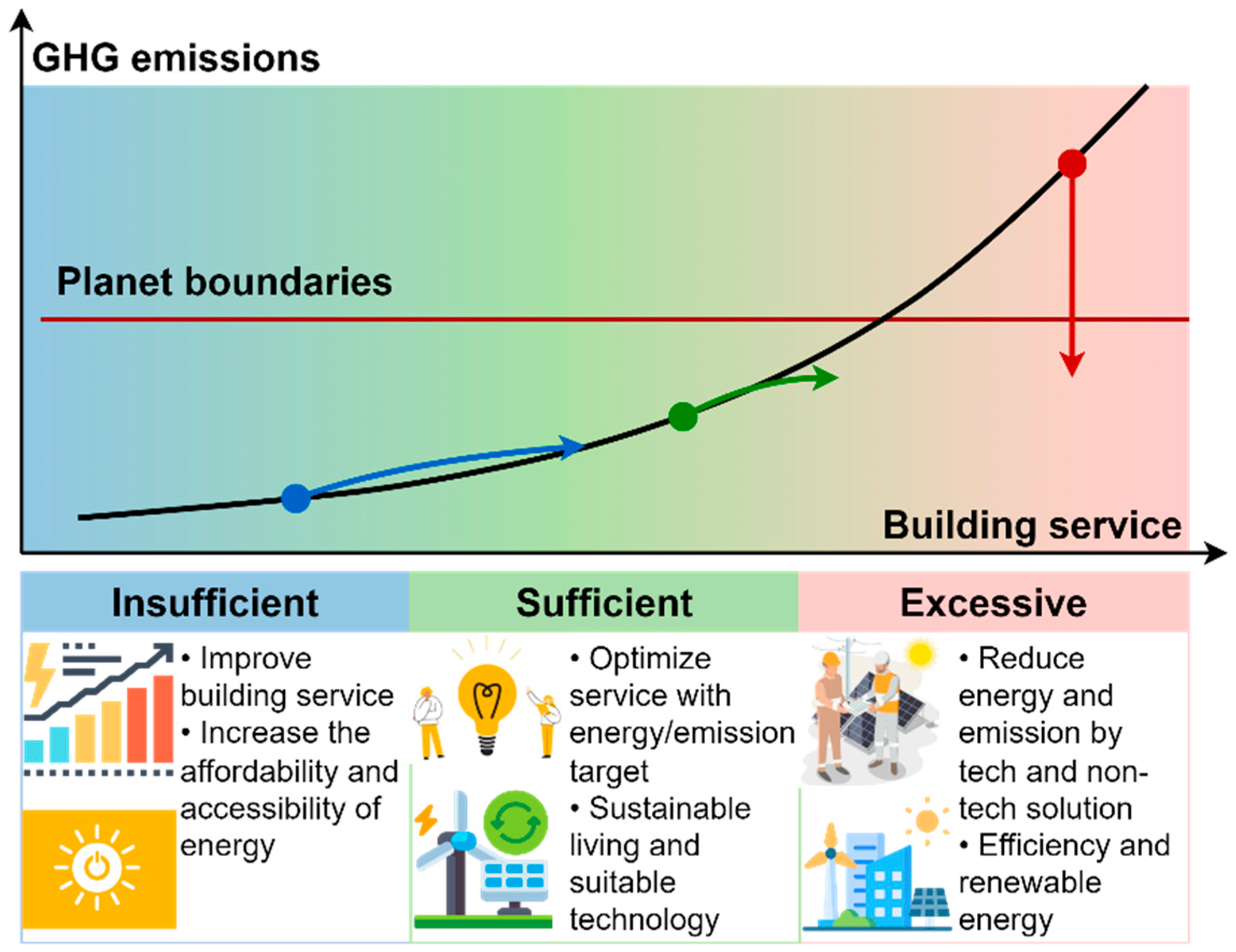


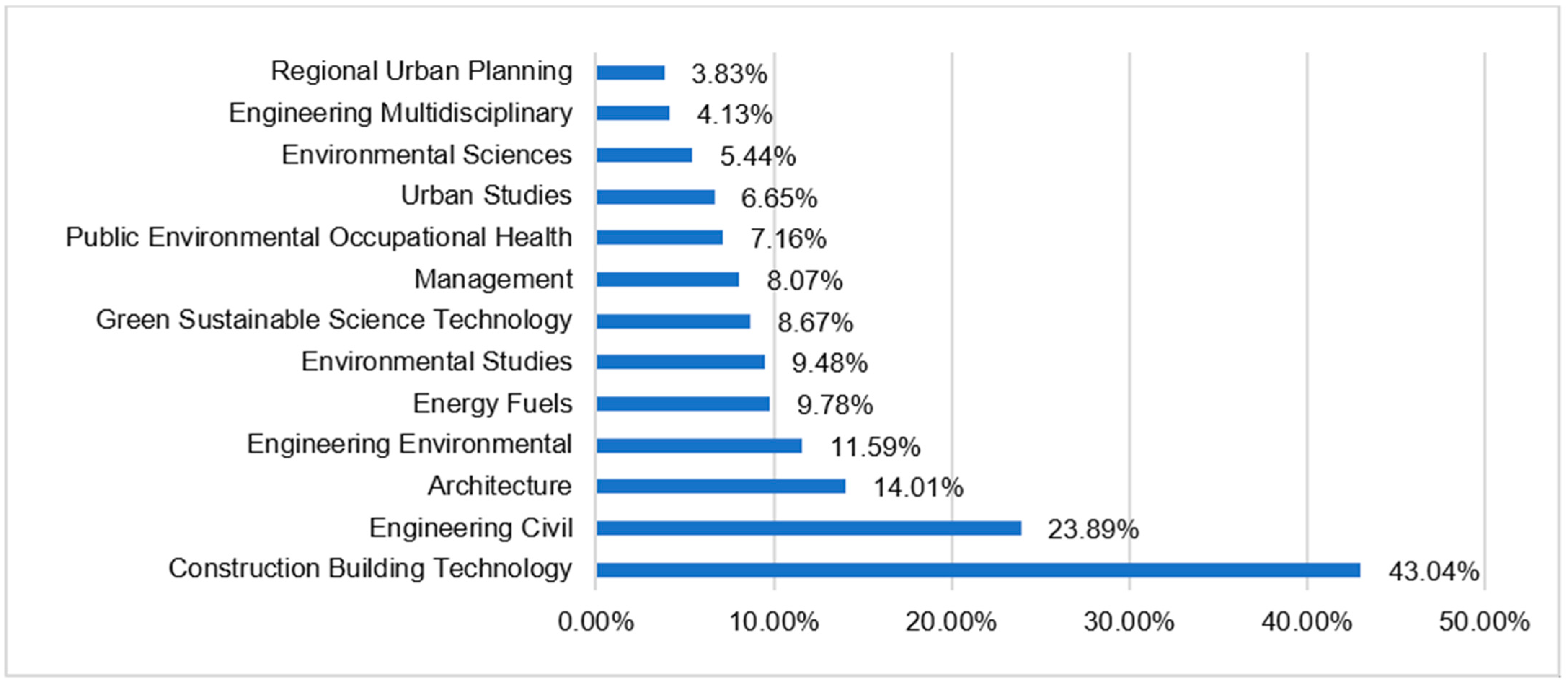
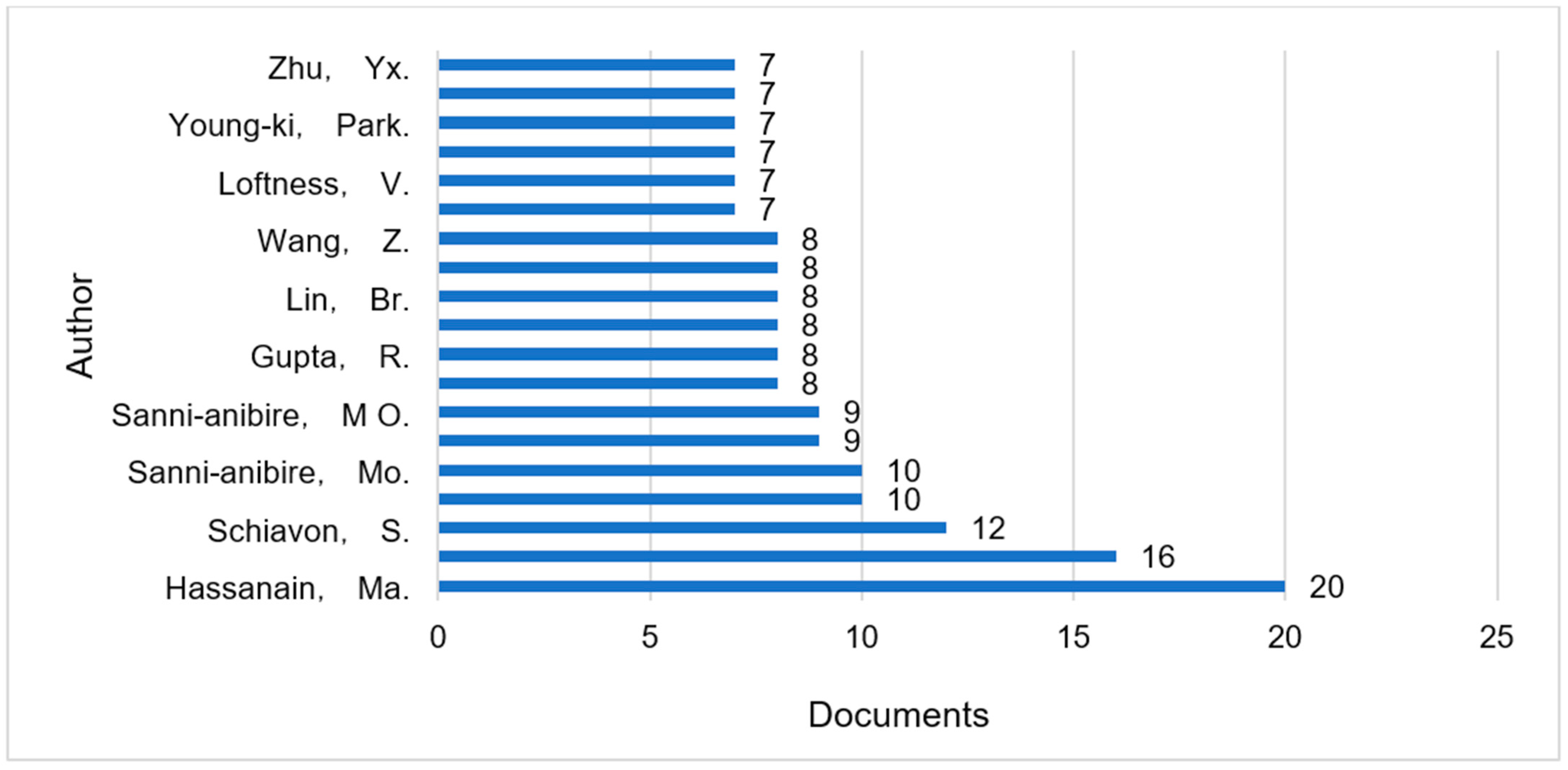
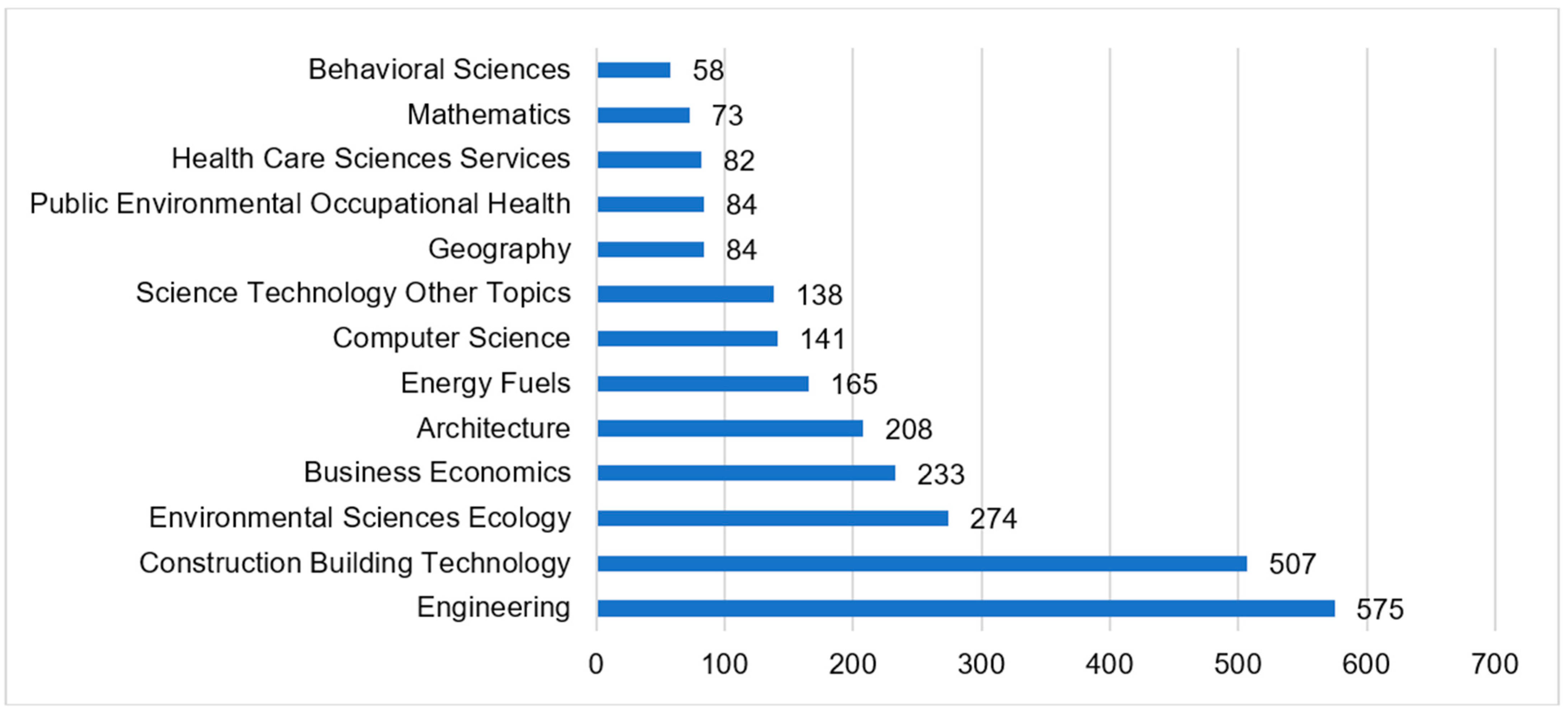
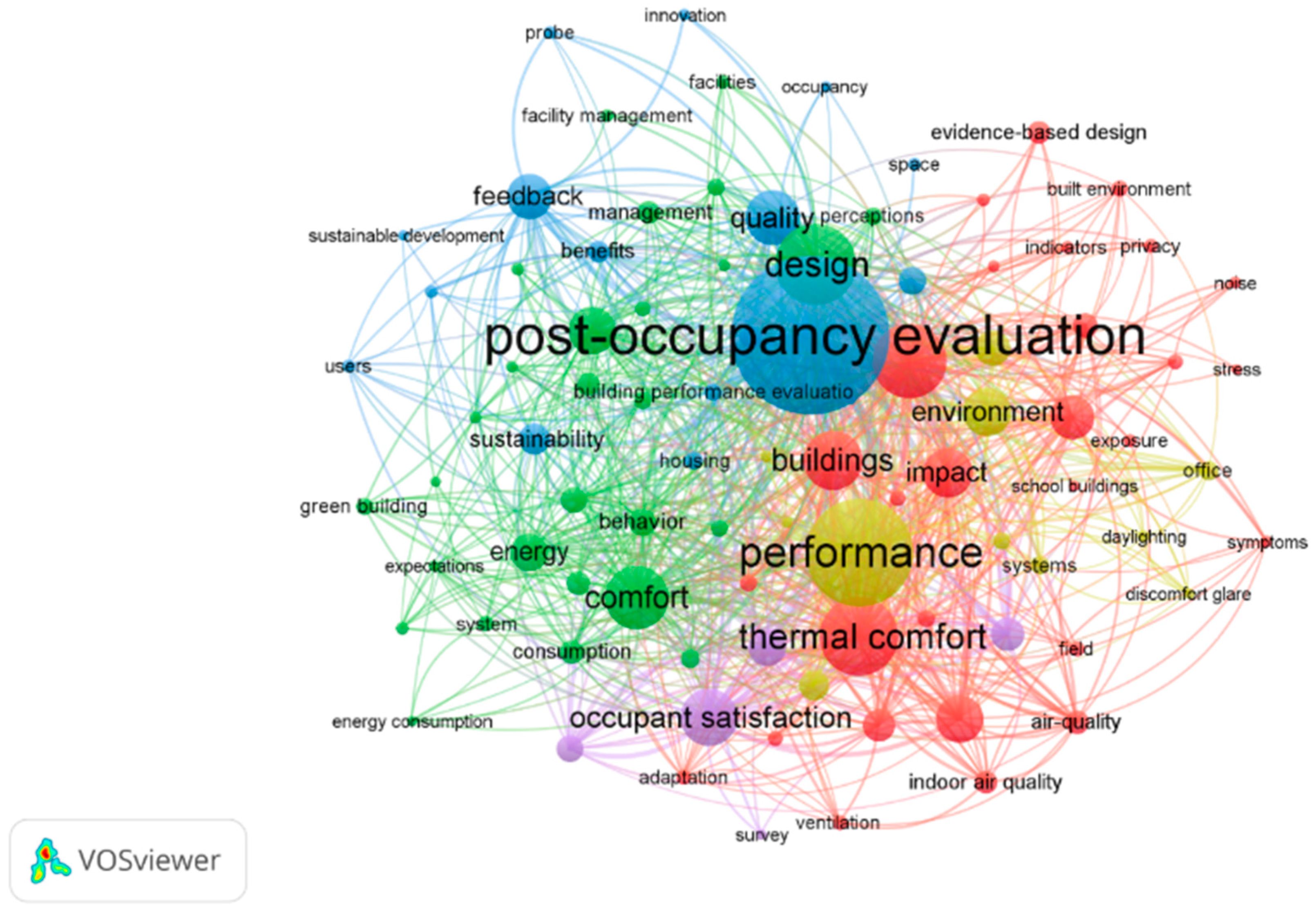
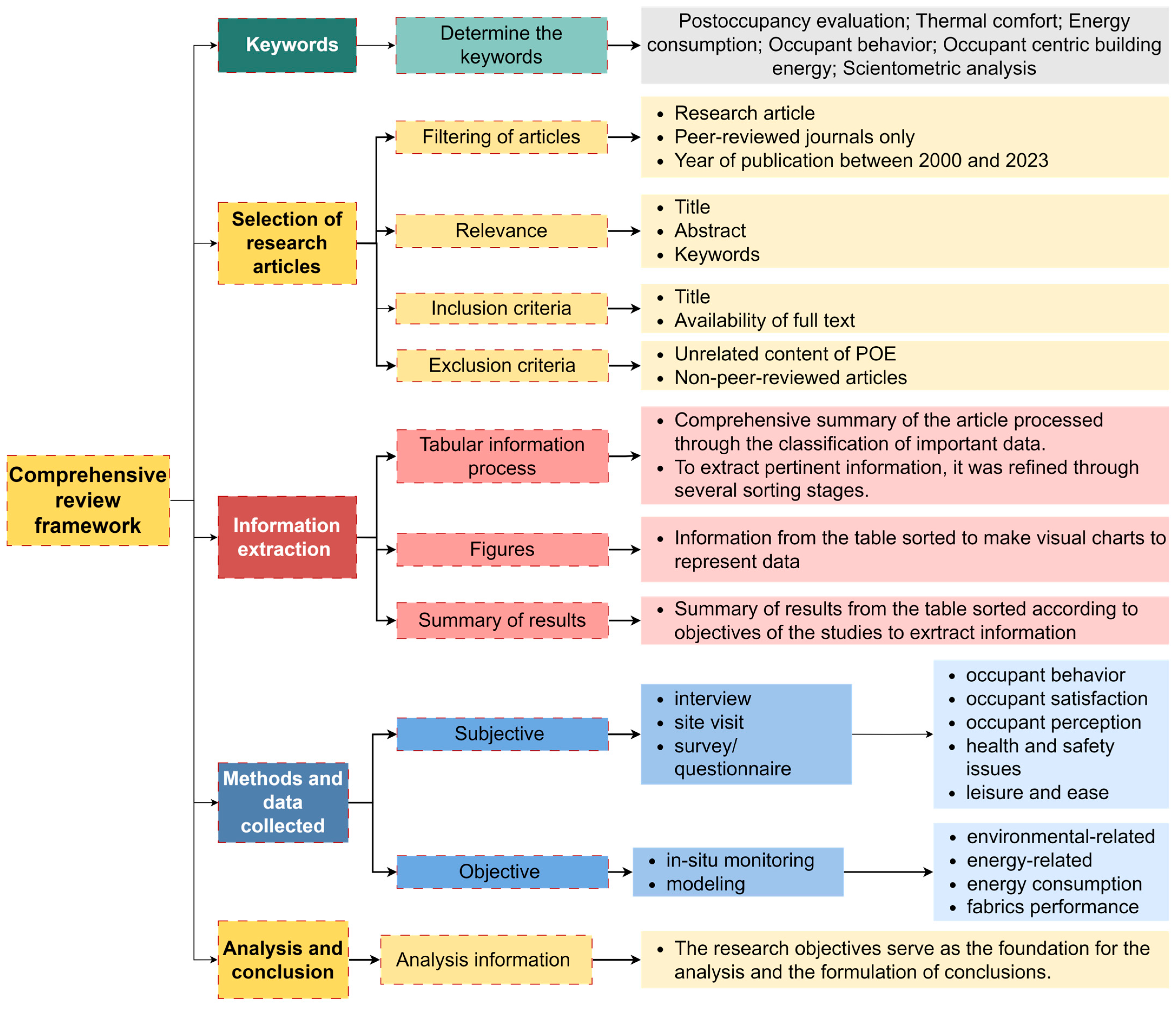
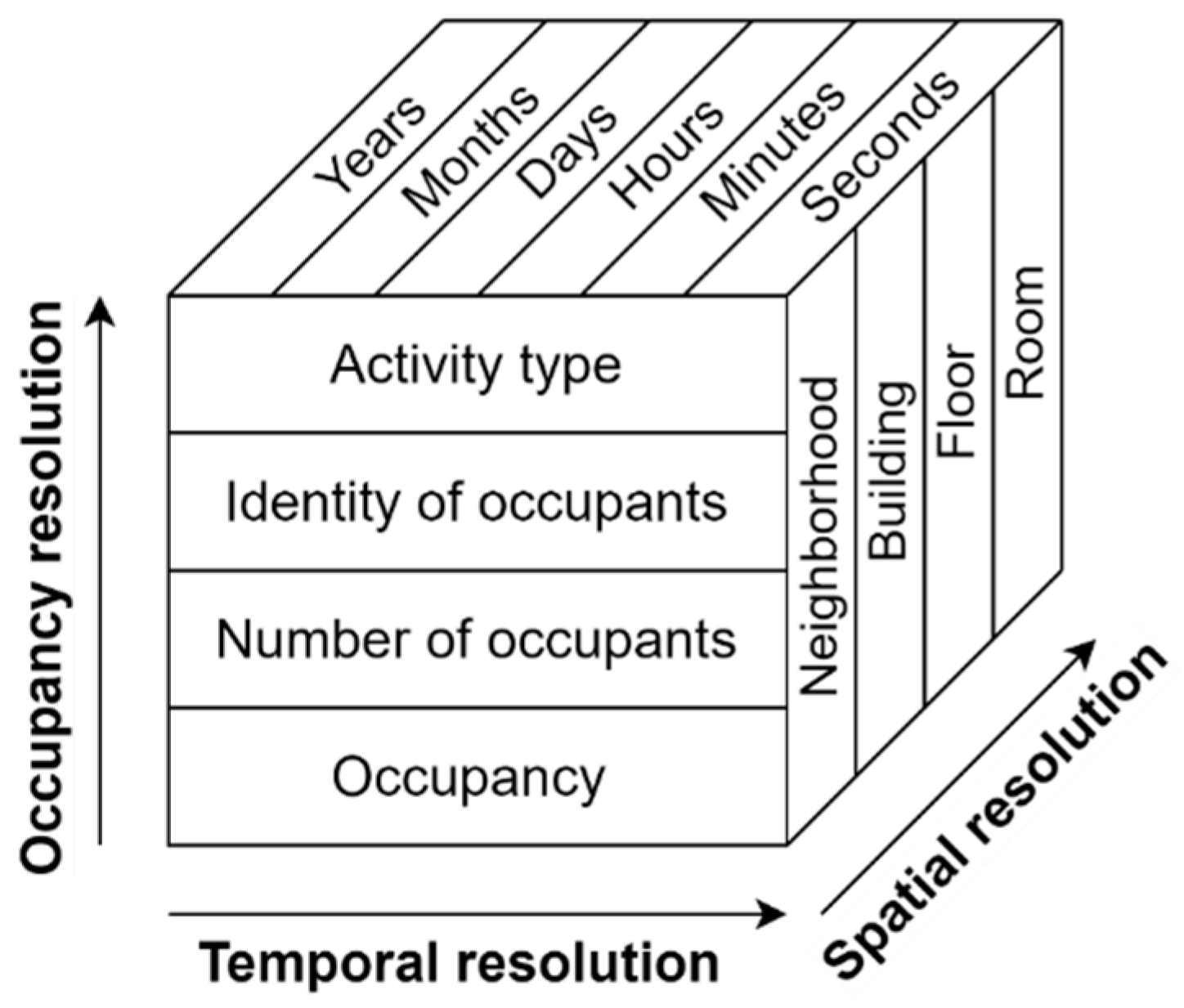
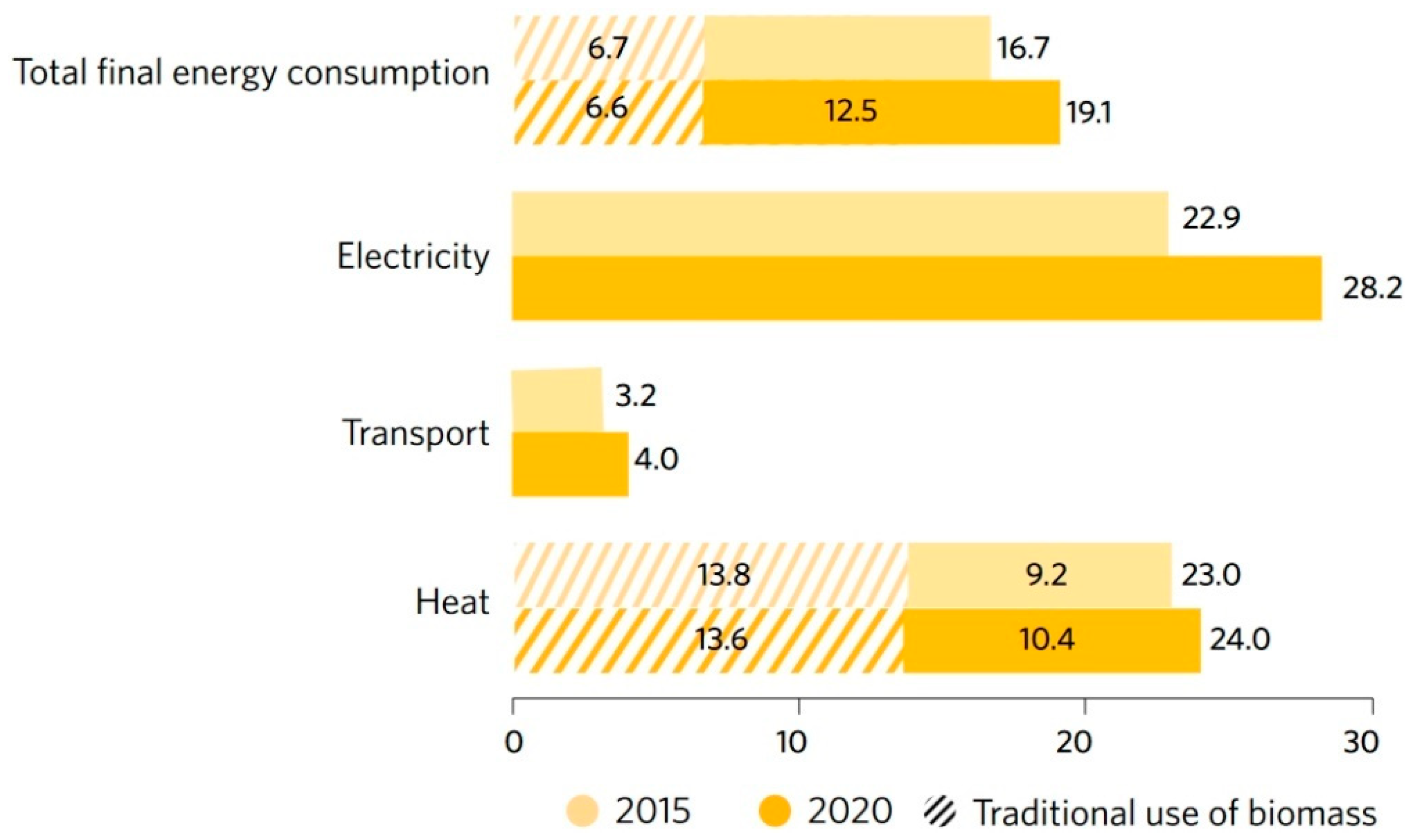
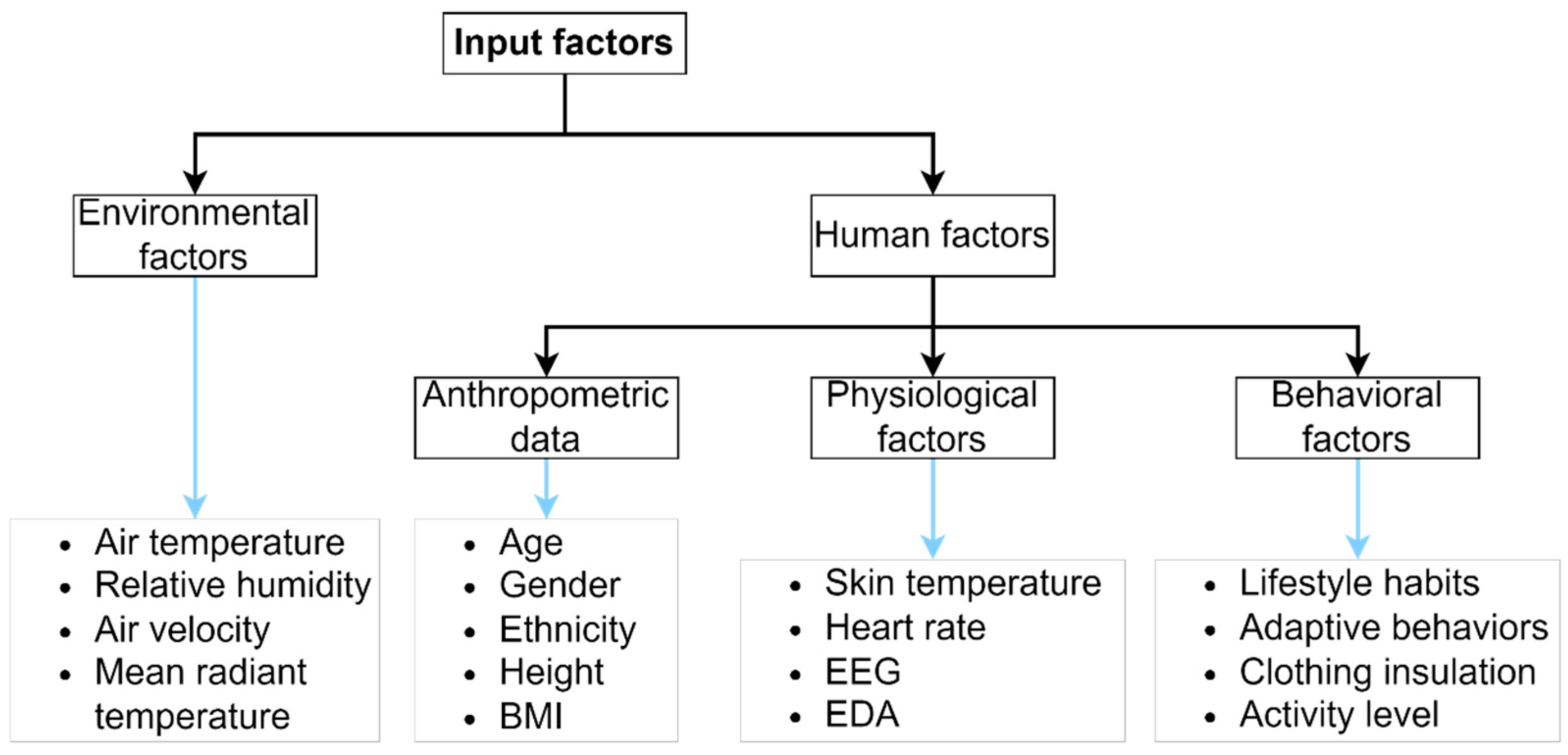
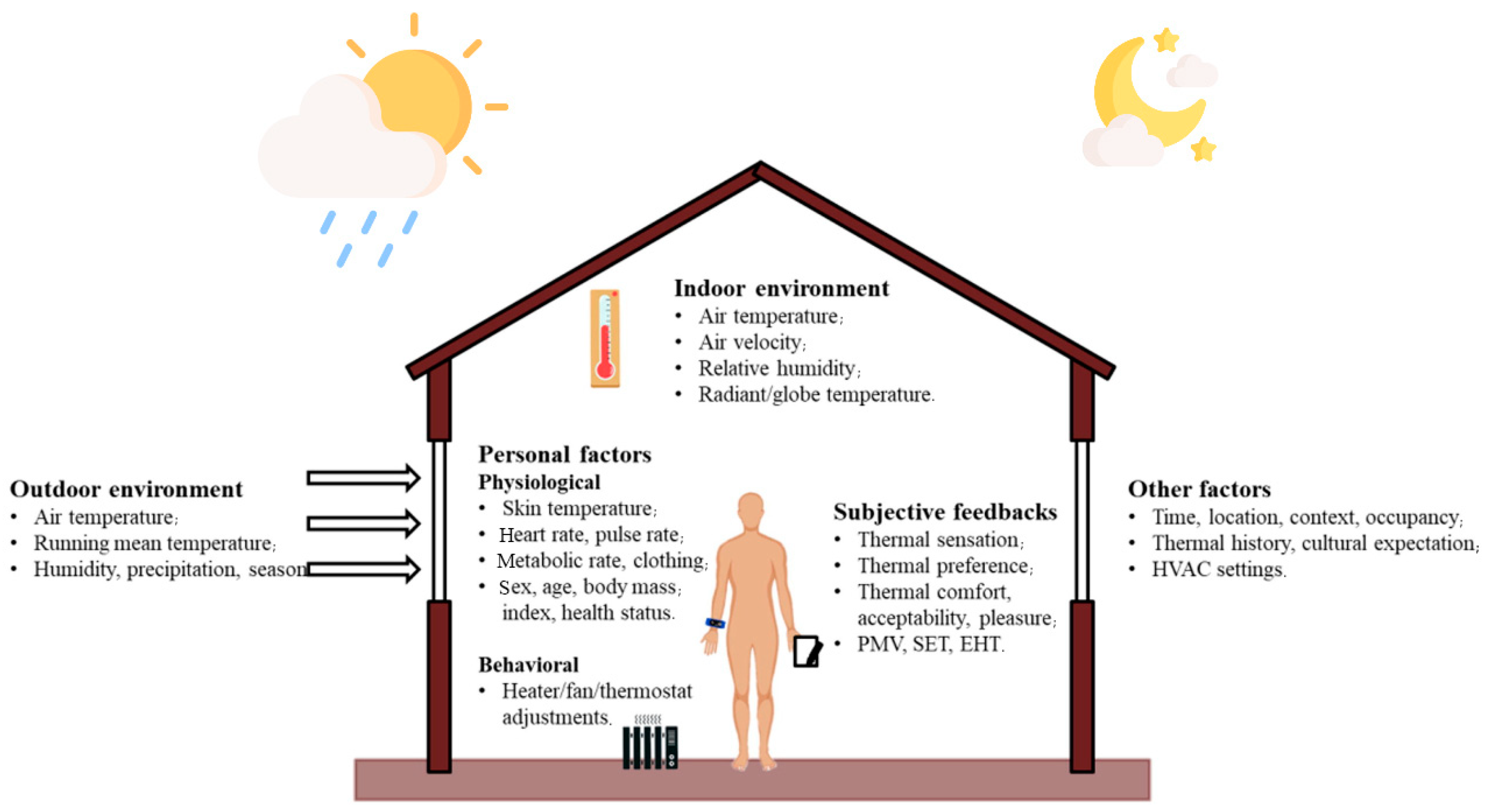
| No. | Journal | 3-Year Average Impact Factor | Number of Articles |
|---|---|---|---|
| 1 | Sustainable Cities and Society | 10 | 1 |
| 2 | Applied Energy | 10.8 | 1 |
| 3 | Building and Environment | 7.0 | 13 |
| 4 | Energy and Buildings | 6.6 | 4 |
| 5 | Journal of Building Engineering | 6.3 | 2 |
| 6 | Alexandria Engineering Journal | 5.7 | 1 |
| 7 | Building Research and Information | 4.7 | 1 |
| 8 | International Journal of Disaster Risk Reduction | 4.7 | 1 |
| 9 | Health and Place | 4.6 | 1 |
| 10 | Frontiers of Architectural Research | 3.5 | 3 |
| 11 | Sustainability | 3.7 | 5 |
| 12 | International Journal of Environmental Research and Public Health | 3.6 | 1 |
| 13 | Buildings | 3.3 | 1 |
| 14 | Energies | 3.2 | 1 |
| 15 | International Journal of Low-Carbon Technologies | 2.6 | 1 |
| No. | Publishing Journal | No. of Articles | Country | Reference (Authors & Year) | Year |
|---|---|---|---|---|---|
| 1 | Building and Environment | 13 | UK | (Agha-Hossein et al., 2013) [10] | 2013 |
| 2 | United States | (Collinge et al., 2014) [22] | 2014 | ||
| 3 | Denmark | (Gonzalez-Caceres et al., 2019) [23] | 2019 | ||
| 4 | Turkey | (Göçer et al., 2018) [24] | 2018 | ||
| 5 | Switzerland | (Pastore and Andersen, 2019) [19] | 2019 | ||
| 6 | United Kingdom | (Ponterosso et al., 2018) [25] | 2018 | ||
| 7 | Australia | (Hirning et al., 2013) [26] | 2013 | ||
| 8 | China | (Li et al., 2018) [27] | 2018 | ||
| 10 | China | (Huang et al., 2022) [28] | 2022 | ||
| 11 | Netherlands | (Hou et al., 2020) [29] | 2020 | ||
| 12 | USA | (Ildiri et al., 2022) [11] | 2022 | ||
| 13 | Spain | (Martinez-Molina et al., 2017) [30] | 2017 | ||
| 14 | Applied Energy | 1 | UK | (Menezes et al., 2012) [31] | 2012 |
| 15 | Journal of Building Engineering | 2 | France | (Pannier et al., 2021) [18] | 2021 |
| 16 | China | (Tang et al., 2020) [32] | 2020 | ||
| 17 | Energy and Buildings | 4 | United Kingdom | (Pretlove and Kade, 2016) [33] | 2016 |
| 18 | Ireland | (Colclough et al., 2022) [34] | 2022 | ||
| 19 | Brazil | (Silva et al., 2017) [35] | 2017 | ||
| 20 | USA | (Choi et al., 2012) [36] | 2012 | ||
| 21 | Frontiers of Architectural Research | 3 | Nigeria | (David Jiboye, 2012) [37] | 2012 |
| 22 | Iraq | (Mustafa, 2017) [38] | 2017 | ||
| 23 | Mexico | (Mundo-Hernández et al., 2015) [39] | 2015 | ||
| 24 | International Journal of Disaster Risk Reduction | 1 | Turkey | (Dikmen and Elias-Ozkan, 2016) [40] | 2016 |
| 25 | Alexandria Engineering Journal | 1 | Egypt | (El-Darwish and El-Gendy, 2018) [41] | 2018 |
| 26 | Sustainable Cities and Society | 1 | UK | (Kansara and Ridley, 2012) [42] | 2012 |
| 27 | Health and Place | 1 | Australia | (Carnemolla et al., 2021) [43] | 2021 |
| 28 | International Journal of Low-Carbon Technologies | 1 | Saudi Arabia | (Shawesh and Mohamed, 2020) [44] | 2020 |
| 29 | Building Research and Information | 1 | UK | (Sharmin and Khalid, 2022) [45] | 2022 |
| 30 | Sustainability | 5 | China | (Ning&Chen, 2016) [46] | 2016 |
| 31 | China | (Bai et al., 2022) [47] | 2022 | ||
| 32 | China | (Khoo et al., 2022) [48] | 2022 | ||
| 33 | USA | (Asojo et al., 2021) [49] | 2021 | ||
| 34 | Australia | (Byrne and Morrison, 2019) [50] | 2019 | ||
| 35 | International Journal of Environmental Research and Public Health | 1 | Denmark | (Sidenius et al.,2017) [51] | 2017 |
| 36 | Buildings | 1 | Singapore | (Lei et al., 2022) [52] | 2022 |
| 37 | Energies | 1 | Brazil | (Bortolini and Forcada, 2021) [13] | 2021 |
| Rank | Keywords | Occurrences | Total Link Strength | Cluster |
|---|---|---|---|---|
| 1 | Post-occupancy evaluation | 251 | 1016 | 3 |
| 2 | Performance | 151 | 833 | 4 |
| 3 | Thermal comfort | 101 | 573 | 1 |
| 4 | Satisfaction | 94 | 568 | 1 |
| 5 | Design | 105 | 497 | 2 |
| 6 | Comfort | 77 | 475 | 2 |
| 7 | Occupant satisfaction | 67 | 447 | 5 |
| 8 | Quality | 64 | 357 | 3 |
| 9 | Buildings | 71 | 340 | 2 |
| 10 | Impact | 56 | 333 | 1 |
| 11 | Indoor environmental quality | 53 | 295 | 1 |
| 12 | Feedback | 50 | 266 | 3 |
| 13 | Green buildings | 40 | 261 | 2 |
| 14 | Health | 48 | 261 | 1 |
| 15 | Building performance | 52 | 254 | 2 |
| 16 | Environment | 54 | 248 | 4 |
| 17 | Productivity | 33 | 219 | 5 |
| 18 | Office buildings | 30 | 213 | 1 |
| 19 | Perception | 32 | 213 | 2 |
| 20 | Energy | 40 | 208 | 2 |
| 21 | Model | 37 | 199 | 4 |
| 22 | Leed | 26 | 181 | 5 |
| 23 | Occupants | 24 | 164 | 2 |
| 24 | Air quality | 22 | 160 | 1 |
| 25 | Workplace | 23 | 155 | 3 |
| 26 | Sustainability | 31 | 136 | 3 |
| 27 | Behavior | 26 | 129 | 2 |
| 28 | Management | 21 | 122 | 2 |
| 29 | User satisfaction | 27 | 122 | 1 |
| 30 | Benefits | 19 | 121 | 3 |
Disclaimer/Publisher’s Note: The statements, opinions and data contained in all publications are solely those of the individual author(s) and contributor(s) and not of MDPI and/or the editor(s). MDPI and/or the editor(s) disclaim responsibility for any injury to people or property resulting from any ideas, methods, instructions or products referred to in the content. |
© 2024 by the authors. Licensee MDPI, Basel, Switzerland. This article is an open access article distributed under the terms and conditions of the Creative Commons Attribution (CC BY) license (https://creativecommons.org/licenses/by/4.0/).
Share and Cite
Zhao, J.; Abdul Aziz, F.; Deng, Y.; Ujang, N.; Xiao, Y. A Review of Comprehensive Post-Occupancy Evaluation Feedback on Occupant-Centric Thermal Comfort and Building Energy Efficiency. Buildings 2024, 14, 2892. https://doi.org/10.3390/buildings14092892
Zhao J, Abdul Aziz F, Deng Y, Ujang N, Xiao Y. A Review of Comprehensive Post-Occupancy Evaluation Feedback on Occupant-Centric Thermal Comfort and Building Energy Efficiency. Buildings. 2024; 14(9):2892. https://doi.org/10.3390/buildings14092892
Chicago/Turabian StyleZhao, Jing, Faziawati Abdul Aziz, Yiyu Deng, Norsidah Ujang, and Yi Xiao. 2024. "A Review of Comprehensive Post-Occupancy Evaluation Feedback on Occupant-Centric Thermal Comfort and Building Energy Efficiency" Buildings 14, no. 9: 2892. https://doi.org/10.3390/buildings14092892
APA StyleZhao, J., Abdul Aziz, F., Deng, Y., Ujang, N., & Xiao, Y. (2024). A Review of Comprehensive Post-Occupancy Evaluation Feedback on Occupant-Centric Thermal Comfort and Building Energy Efficiency. Buildings, 14(9), 2892. https://doi.org/10.3390/buildings14092892






